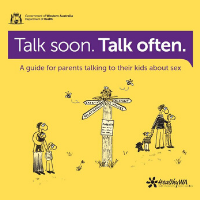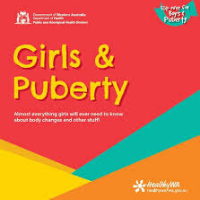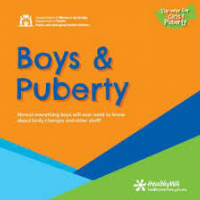Private Body Parts: Why, when & how to start the conversation.
- Kayelene Kerr Child Safety Educator & Advocate
- Mar 31, 2022
- 4 min read
Updated: Jan 4, 2023
This article was written by Kayelene Kerr from eSafeKids.
Teaching children the correct terms for the private parts of their body can be one of the first conversations we start to educate our children about their amazing body and body safety.
Sounds easy enough, and for some people it will be, for others this might be really challenging. The reality is for many people these were not conversations had in our childhood homes. They can make us feel uncomfortable, awkward and out of our depth.
Why is it important?
From a sexual health perspective it's important because it promotes:
⭐️ positive body image
⭐️ self confidence
⭐️ children to have agency over their body
⭐️ open parent-child communication.
It can also decrease:
⭐️ shame
From a child safety perspective it's important as we know from research that children who know the correct terms for the private parts of their body are:
⭐️ less likely to be sexually abused
⭐️ if abused more likely to disclose
⭐️ if disclosing the disclosure has a greater chance of being understood
Private parts
Private body parts are the parts of our body usually covered by our underwear, clothes or swimwear.
Female
Vulva
Vagina
Bottom
Anus
Breasts
Nipples
The vagina is just one part of the vulva. I've spoken to thousands of adults many of whom had not heard the term vulva or find it awkward, uncomfortable and difficult to use the term. I'll never forget the time someone asked why I was talking about a car (Volvo).
Male
Penis
Scrotum
Testicles
Bottom
Anus
Teach children the correct words for the private parts of their body in the same way you would teach them head, shoulders, knees and toes.
We also include mouth as a private/personal body part as child sexual abuse often includes oral sexual acts.
"No one should put anything in your mouth unless there is a good reason."
A good reason may include going to the doctor, dentist, giving medication or feeding a child.
As children get older you can introduce:
Urethra (male & female)
Labia (female)
Clitoris (female)
Foreskin (male)
It’s really important that children are taught that the private parts of their body are individual and like the rest of our body can come in different colours, sizes and shapes. As a child grows the private parts of their body will likely change in appearance, this is normal!

Not rude, not bad
The private parts of our body are not ‘rude’ or ‘bad’. If we use words like rude/bad/gross, or don’t talk about them at all, it can contribute to feelings of shame and confusion.
In the context of child sexual abuse it can inhibit disclosure and also contribute to feelings of shame, fear, guilt and self blame.
Family names/nick names
Sometimes families call private body parts by 'nick names' or 'home/family names'.
It’s important that we teach children if their private parts are hurting or they need to talk to someone about their private parts, using the correct names means no one gets confused.
For example, but for an astute teacher a disclosure of child sexual abuse may have been missed. At the end of a busy school day a young girl didn't want to go home because her dad was 'parking' and 'putting' his 'car' (penis) in her 'garage' (vagina).
When do I start?
The easiest time to start talking about private body parts is when your child is young, ideally shortly after birth. Think of this as your training wheels time, a time when you can get comfortable and confident saying words you may have never been taught or used.
There are many opportunities in early childhood to practice:
⭐️ Nappy changes
⭐️ Bathtime
⭐️ Getting dressed
⭐️ Toileting and toilet training
⭐️ When playing with dolls, toys, animals
⭐️ When children are curious about your private parts
⭐️ When you’re doing something private
⭐️ When you're talk about bodily functions
If you’re buying your child a doll, consider getting one that is anatomically correct. You'll find a diverse range of anatomically correct dolls on the Catch website.

Body Safety Rules
Child friendly books
My favourite child friendly books are:

Free resources
The Western Australia Department of Health has made these fantastic resources freely available. You'll find these resources in the eSafeKids Members Community.
📚 Talk soon. Talk Often.
📚 Girls & Puberty
📚 Boys & Puberty
On going, age and developmentally appropriate conversation and education about body safety and comprehensive relationship and sexuality education is essential.
Sometimes the hardest part is getting started. You've got this!
To learn more about eSafeKids workshops and training visit our services page.
To view our wide range of child friendly resources visit our online shop.
Join the free eSafeKids online Members' Community. It has been created to support and inspire you in your home, school, organisation and/or community setting.
About The Author
Kayelene Kerr is recognised as one of Western Australia’s most experienced specialist providers of Protective Behaviours, Body Safety, Cyber Safety, Digital Wellness and Pornography education workshops. Kayelene is passionate about the prevention of child abuse and sexual exploitation, drawing on over 24 years’ experience of study and law enforcement, investigating sexual crimes, including technology facilitated crimes. Kayelene delivers engaging and sought after prevention education workshops to educate, equip and empower children and young people, and to help support parents, carers, educators and other professionals. Kayelene believes protecting children from harm is a shared responsibility and everyone can play a role in the care, safety and protection of children. Kayelene aims to inspire the trusted adults in children’s lives to tackle sometimes challenging topics.
About eSafeKids
eSafeKids strives to reduce and prevent harm through proactive prevention education, supporting and inspiring parents, carers, educators and other professionals to talk with children, young people and vulnerable adults about protective behaviours, body safety, cyber safety, digital wellness and pornography. eSafeKids is based in Perth, Western Australia.
eSafeKids provides books and resources to teach children about social and emotional intelligence, resilience, empathy, gender equality, consent, body safety, protective behaviours, cyber safety, digital wellness, media literacy, puberty and pornography.
eSafeKids books can support educators teaching protective behaviours and child abuse prevention education that aligns with the Western Australian Curriculum, Australian Curriculum, Early Years Learning Framework (EYLF) and National Quality Framework: National Quality Standards (NQS).





































